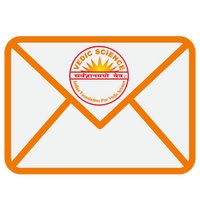SCIENCE and YOGA
Ask yourself: When do you want to be happy? All the time. How do you want to be happy? You expect unlimited results from limited actions. Following this very mantra, which is very common in the west, our society is consuming day by day more and more, to squeeze a little bit more happiness out of something. Think for a moment. Instead of having values for things, we just consume blindly, rather than get an emotional reply in the form of the kleśas like avidyā, asmitā, rāga, dveśa and abhiniveśa. Avidyā, of course, being the breeding ground of all kleśas. Rāga is an experience of pleasure gained through those material objects or creatures that we love. Dveśa is an experience of pain gained through hatred of those that we don't love. On this basis, we decide our course of action. Sanskāras are built upon what brings us personal pain and pleasure. But if we want to see the bigger picture as to what really a value is, we can rely on the Vedas. We even find here traces of democracy and more importantly, how to reach everlasting bliss. But how to understand the Vedas? For this, there are various help books. The most well-known are the Ṣaḍ-darśanas, Sāṅkhya, Yoga, Mīmānsā, Vedanta, Nyāya and Vaiśeṣika. Yoga teaches us as to how to get rid of the body, viz. a right understanding of the relationship of Prakṛti and Puruṣa. But why is this important? How does this help us in our daily lives to be truly happy and get rid of all obstacles in life? Can this be all experienced through the Vedas? Let us have a closer look here as to how the mind works in more detail.
